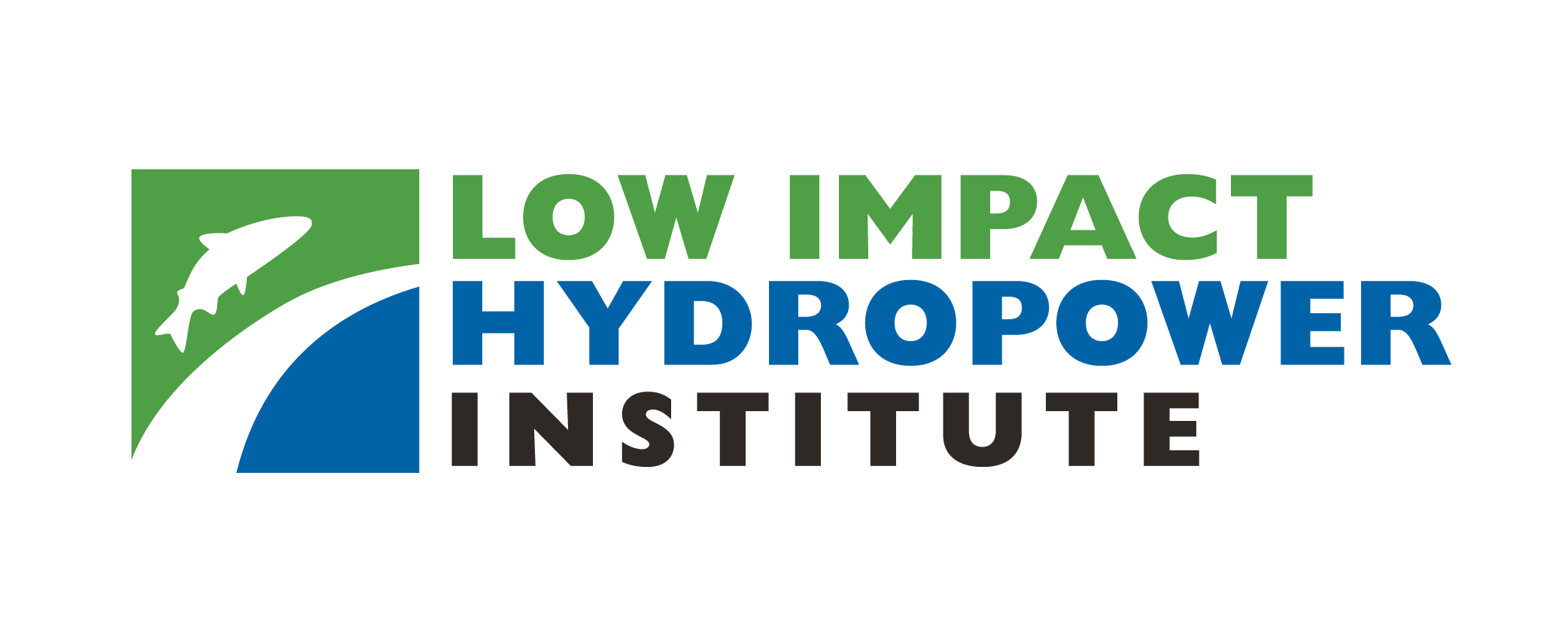LIHI 證書 #54 - 新罕布夏州傑克遜米爾斯項目

| 項目名稱 | 傑克森米爾斯 |
| 理海證書編號 | 54 |
| LIHI 證書期限 | 2020 年 1 月 31 日 – 2030 年 1 月 30 日(可選擇延長至 2033 年 1 月 30 日) |
| 擁有者 | 新罕布夏州納舒厄市 |
| 狀態 | 新罕布夏州 |
| 地點 | 位於納舒厄河 1.25 英里處,距離新罕布夏州納舒厄 3 號公路(主街)交叉口下游約 700 英尺。 |
| 裝置容量 | 1.1兆瓦 |
| 平均年發電量 | 3,596 兆瓦時 |
| 設施類型 | 徑流 |
| 聯邦能源監管委員會 不。 | P-7590 豁免 1984 |
傑克遜米爾斯計畫位於新罕布夏州納舒厄市納舒厄河與梅里馬克河交匯處上游約 1.25 英里處。納舒厄河主幹流長 37.5 英里,發源於馬薩諸塞州蘭開斯特,位於北納舒厄河和南納舒厄河的交匯處,向東北流經馬薩諸塞州雪莉、艾爾和佩珀雷爾,流入新罕布什爾州納舒厄。傑克遜米爾斯的建造 壩 於1920年竣工。
專案 壩 是一個長 180 英尺、高 33 英尺的重力式磚石結構,包括一個 8 英尺高的氣動 山頂門 以及混凝土面石重力式橋台。大壩頂部八英尺處設有氣動頂閘。上游和下游 魚道 由阿拉斯加陡峭通道提供 魚道 以及不銹鋼旁通管。這 發電站,位於北壩 鄰接,裝有一台 1 MW 單調節螺旋槳渦輪發電機。
該項目運營於 徑流 模式並蓄水40英畝的水庫。有一條約 100 英尺長的短繞行河段。該項目提供最低 207 立方英尺/秒的流量(或流入量,如果更低)以在河流中提供充足的水生棲息地。該流動制度是與美國魚類和野生動物管理局 (USFWS) 協商後製定的。
工程範圍內的水域被指定為 B 類水域,最適合用於主要接觸娛樂、水生棲息地和處理後的供水。然而,由於汞、大腸桿菌和非本地水生植物的污染,整個納舒厄河都被列為不適合水生生物、魚類食用和游泳的區域。 2015 年至 2017 年,我們與新罕布夏州環境服務部合作進行了水質監測。測試結果表明,該計畫不會對河流水質產生不利影響。 NDHES 可能會要求在安裝擬建的新渦輪機後進行進一步監測。
19 世紀,納舒亞河的洄游魚類通道被阻斷,當時位於 洛威爾計畫 (LIHI #142) 以及艾塞克斯大壩 勞倫斯計畫 (LIHI #121) 建於梅里馬克河上。然而,這兩個計畫現在都為鯡魚、藍背鯡魚、美洲鰻、美洲西鯡、大西洋鮭、七鰓鰻和條紋鱸魚提供了上游通道。丹尼爾風格的魚道有兩個入口(尾水和 溢洪道) 於 1984 年在傑克遜米爾斯建成,每年運營一次。納舒厄市一直與新罕布夏州魚類和野生動物管理局、國家海洋和大氣管理局以及美國魚類及野生動物管理局合作,以優化魚道運作。美國魚類及野生動物管理局每年都會檢查魚道設施,並在必要時對魚道結構和操作提出修改建議。魚類逆流活動通常發生在 5 月 1 日至 6 月 30 日,而鰻魚逆流通行則持續約從 7 月 1 日至 9 月 15 日(一旦 Denil 梯子安裝好鰻魚籠)。典型的下游魚類通道發生在 5 月 1 日至 7 月 31 日和 8 月 15 日至 11 月 15 日之間。 8 月 15 日至 11 月 15 日期間支持下游鰻魚通道。下游魚類通道設施旨在供美洲西鯡、鯡魚和大西洋鮭通過。下游鰻魚通道包括使用斜坡陷阱,利用下游魚通道入口、腔室和管道。此外,從 8 月 15 日至 11 月 15 日,一旦發生強降雨,或河水溫度降至攝氏 10 度以下,將連續三天關閉夜間渦輪機。常駐魚類包括黑鯽魚、藍鰓魚、棕牛頭魚、鏈梭魚、金鯧、大口鱸魚、南瓜籽魚、岩鱸、白吸盤魚和黃鱸魚。
大壩附近的土地高度開發,都市化,且為私人所有。此計畫的徑流式運作方式使得水流對海岸線侵蝕的影響極小。計畫業主一直積極管理納舒亞河的水生入侵物種,並成功地將這些物種從計畫附近清除。由於計畫區屬於城市性質,因此未發現具有生態意義的土地。
計畫附近可能存在的受威脅或瀕危物種包括北長耳蝙蝠和白頭鷹。由於缺乏樹木和合適的棲息地,這些物種不太可能在專案範圍內存在。在計畫區域內尚未觀察到這兩種物種。 2007 年和 2010 年,在計畫區上游的納舒厄河內發現了布蘭丁龜和木龜。然而,新罕布夏州魚類和野生動物管理局預計,擬議挖掘尾水以更換渦輪機不會對這兩個物種的棲息地造成影響。
計畫附近的文化資源包括上游的 Mine Falls 水力發電計畫門樓和納舒厄電力 運河,納舒厄製造公司歷史街區的一部分,該街區被列入 國家歷史遺跡名錄。與新罕布夏州歷史保護辦公室的協商發現,該計畫對附近的資源沒有影響。
由於該地區的開發性質,休閒娛樂活動受到限制。河川的河岸比較陡峭,水庫週邊都是工廠建築、購物中心、商業設施和住宅。傑克遜米爾斯計畫內部及週邊區域是河濱重建計畫的一部分,該計畫包括改善大壩工地和停車場周圍的行人通道的設計。
合規狀態
此證書包括以下設施特定條件:
2023 年條件部分滿足。 條件一: 自批准之日起 60 日內 豁免 對於渦輪機更換的修改,設施所有者應提交:a) FERC 命令和任何條件的副本; b) 美國魚類及野生動物管理局要求的已批准的運營和流量監測計劃的副本。
條件2: 設施所有者應完成 NHDES 作為渦輪機更換專案的一部分要求的設施水質採樣,並應在 NHDES 批准結果後 60 天內向 LIHI 報告。如果發現水質問題,業主應向 LIHI 提供經 NHDES 審核批准的解決方案和時間表。
條件3: 設施所有者應向 LIHI 提交 USFWS 批准的 魚道 批准後60天內提出實施計畫;此後,應在年度合規聲明中向 LIHI 提供魚類通道改造的最新情況。更新內容應包含任何相關機構信函、會議記錄和批准的副本,以及實施通道改善所取得的進展。 LIHI 保留根據實現機構目標和目的(包括通行效率目標)的進展修改此條件和/或重新評估認證的權利。
條件 4(可選): 如果在認證期限到期前六個月的任何時間,設施所有者根據納舒厄市中心河濱發展計劃在設施內實施娛樂和通道改善,LIHI 將審查該資訊並確定是否授予 PLUS 標準並將認證期限延長三年。
2024: 未發現任何重大變更或合規問題。根據年度審查結果,該項目仍然合規。該項目報告稱渦輪機更換應於 2025 年完成。對於條件 1,該項目報告稱渦輪機更換完成之前沒有變化。 對於條件 2,該項目未報告任何活動。對於情況 3,計畫報告稱,由於渦輪機更換計畫工期的延長,魚類通道實施計畫的進度受到了影響。對於條件 4,該項目報告沒有活動,但納舒厄市中心河濱發展計劃的部分建設正在進行中,計劃於 2025 年完工。
2023: 未發現任何重大變更或合規問題。根據年度審查結果,該項目仍然合規。該計畫報告稱,渦輪機更換工作於 2023 年開始。對於條件 1,該項目提交了營運計劃,等待頂門營運計劃的更新。 對於條件 2,項目提交了一份水質監測計劃的副本。對於條件 3,該項目提交了更新的魚道運營計劃和魚類數量日誌。對於條件 4,該項目未報告任何活動。
2022: 未發現任何重大變更或合規問題。根據年度審查結果,該項目仍然合規。在所有情況下,除 NHDES 於 2022 年 9 月 3 日頒發的新水質證書和 FERC 於 2022 年 9 月 12 日頒發的渦輪機更換環境評估外,該項目均未報告待更換渦輪機的活動。
2021: 沒有報告任何變更或合規性問題。根據年度審查結果,該項目仍然合規。在所有條件下,除美國魚類及野生動物管理局於 2021 年 11 月 19 日發布的修訂條款和條件外,該項目均未報告任何待更換渦輪機的活動。
2020: 目前證書的年度報告尚未生效。
認證歷史
2022 年 1 月 1 日: 根據 2022 年 1 月 1 日發布的 LIHI 第二版認證手冊第 2.05 版,LIHI 證書期限已延長。
2021年10月14日: 低影響水電研究所已就傑克遜米爾斯計畫的重新認證做出了最終決定。 30 天的上訴期限於 2021 年 9 月 3 日關閉,尚未有人提出上訴。因此,認證該項目的決定現已是最終決定。新任期為2020年1月31日至2025年1月30日。
2021 年 8 月 4 日: 低影響水力發電研究所 (LIHI) 已初步批准傑克遜米爾斯計畫獲得為期 5 年的低影響認證。該決定是初步決定,需等待 30 天的上訴期。只有在 60 天的評論期內對初始申請發表評論的人才有資格提出上訴。此類上訴需要包括有關該項目如何不符合 LIHI 標準的解釋。申訴請求可以透過電子郵件發送至 評論@lowimpactHydro.org 請在主旨欄註明“傑克遜米爾斯計畫”,或郵寄至低影響水力發電研究所,地址:1167 Massachusetts Ave, Office 407, Arlington, MA 02476。所有請求都將發佈在網站上。申請人將有機會回應,任何回應也將被公佈。 請求必須在 2021 年 9 月 3 日東部時間下午 5 點前收到。 完整的申請和審核員報告如下。如果沒有收到上訴請求且決定成為最終決定,則該計畫的認證期限將為 2020 年 1 月 31 日至 2025 年 1 月 30 日,除非根據條件 4 延長。
2021年5月10日: 低影響水力發電研究所 (LIHI) 已收到 Jackson Mills Corp. 針對位於新罕布夏州納舒亞河的 Jackson Mills 計畫的完整重新認證申請。 LIHI 正在尋求對該申請的評論。與特定 LIHI 標準(流量、水質、魚類通道等)直接相關的評論將最有幫助,但所有評論都會被考慮。意見可以透過電子郵件提交給研究所 評論@lowimpactHydro.org 請在主旨欄註明“傑克遜米爾斯專案評論”,或郵寄至低影響水力發電研究所,地址:1167 Massachusetts Avenue, Office 407, Arlington, MA 02476。 意見必須在 2021 年 7 月 9 日美國東部時間下午 5 點前送達研究所,才會被考慮。 所有評論都將發佈到網站上,申請人將有機會回應。任何回應也會發布。完整的應用程式如下。
2016年8月19日: 2016 年 7 月 18 日,LIHI 發布了初步認證決定,傑克遜米爾斯水力發電計畫(FERC 編號 P-7590)繼續滿足 LIHI 認證標準。 初步認證決定的通知已於 2016 年 7 月 19 日發佈在研究所的網站上,並發送給新罕布夏州利益相關者的電子郵件分發清單。 LIHI 為評論者提供了 30 天的上訴期,以請求對初步決定提出上訴。 30天期限內未收到任何上訴請求。因此,重新認證是最終決定。此認證包括兩個針對設施的具體條件,如下:
- 2018/2019 年條件滿足。 條件 1. 業主應與 NHDES 合作完成設施的水質採樣。此監測計劃的所有結果應在 LIHI 認證後 120 天內轉發給 LIHI。業主還應向 LIHI 發送 NHDES 對結果的解釋文件。如果水質結果繼續顯示(如 2010 年),專案的運作和維護不是導致違反任何適用水標準的原因,則符合此條件。如果發現水質問題,業主應向 LIHI 提供經 USFWS 和 NHDES 審查和批准的解決方案。
- 2016 年部分滿意,2021 年重新認證取代。 條件2。 業主一直積極與美國魚類及野生動物管理局和尼日爾魚類及野生動物管理局合作,解決其上游和下游魚類通道問題。近幾個月來,我們與國家機構進行了實地考察、會面並達成了協議。業主應繼續與這些機構互動,並在 LIHI 認證後不遲於 45 天內向 LIHI 發送文件,以驗證 FERC 批准自 2016 年 2 月以來採取的行動。
2016年7月18日: LIHI 執行董事 Michael J. Sale 利用 LIHI 管理委員會授予的權力,發布了初步認證決定,認定 Jackson Mills 水力發電計畫 (FERC 編號 P-7590) 符合 LIHI 認證標準。根據 LIHI 2 第 4.2.5 節的規定nd 版本,初步認證決定將連同申請審查員的報告和(如果準備好)執行董事的報告一起在研究所的網頁上發布 30 天。發布通知將提供給對初始申請包發表評論的所有個人或組織。任何評論者均可在 2016 年 8 月 19 日結束的 30 天期限內向執行董事提交一封信,要求提出上訴。上訴請求必須說明水電設施未達到一項或多項標準的具體原因。如果個人或組織沒有對初始申請資料發表評論,則他們不得提出上訴。有關 LIHI 上訴流程的更多信息,請參閱 LIHI 手冊,網址為 https://lowimpacthydro.org/certification-program-html/。如果在 30 天期限內沒有提出上訴,執行董事將為該設施頒發 LIHI 認證,並在研究所的網站上發布認證通知。一旦最終確定,傑克遜米爾斯計畫的認證生效日期為 2015 年 1 月 31 日,有效期為五 (5) 年,將於 2020 年 1 月 31 日到期。
2015年10月30日: 低影響水力發電研究所已收到傑克遜米爾斯水電計畫新一期低影響認證的完整申請。申請資料可以在下面的文件部分找到。
該申請的公眾意見徵詢期已於 2015 年 12 月 30 日結束。
2015年7月10日: 傑克遜米爾斯水電項目已獲得當前證書期限的延長。新的到期日為 2015 年 12 月 31 日。
2010年7月21日: 傑克遜米爾斯水電項目已被認證為低影響項目,有效期為五年,自 2010 年 1 月 31 日生效,至 2015 年 1 月 31 日到期。
2010年3月31日: 公眾評論期已結束。
2010年1月31日: 埃塞克斯水電協會已提交傑克遜米爾斯水電計畫認證申請。公眾評論期將持續 60 天。
認證文件
2021 年重新認證
2015 年重新認證
2010年認證
- Jackson Mills 認證求職信和問卷
- Jackson Mills 認證評審報告 2010
- 申請附錄-受威脅和瀕危物種
- 應用附錄 – 水質
- 魚道應用程式附錄 – 流程
- 申請附錄-所有權和監管狀態
- 申請附錄 – 娛樂
- 申請附錄 – 場地位置圖
